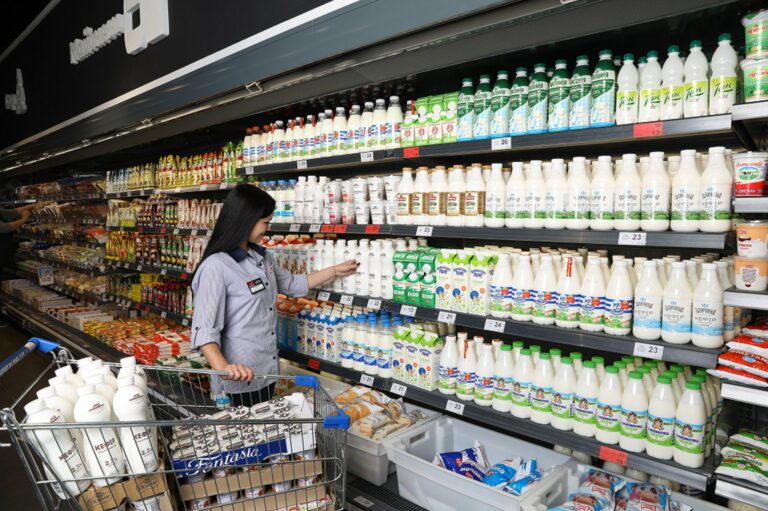Prices will continue to grow rapidly: National Bank explains the inflationary jump
12 November 2024 13:35
Consumer price growth in Ukraine has exceeded the National Bank’s forecasts, signaling an increase in inflationary pressure in the country. According to updated data, inflation may reach more than 10% by the end of the year. This is reported by "Komersant Ukrainian" with reference to NBU data.
In October 2024, consumer inflation in Ukraine accelerated to 9.7% in annual terms compared to 8.6% in September. Month-on-month, prices rose by 1.8%, according to the State Statistics Service of Ukraine.
The inflation rate exceeded the expectations set out in the National Bank’s October Inflation Report, mainly due to a significant increase in food prices. Negative weather conditions affected crop yields, which limited the supply of food and led to an acceleration in prices for basic foodstuffs.
Follow us on Telegram: the main news in a nutshell
Administratively regulated prices and fuel prices also grew somewhat faster than expected.
Underlying inflationary pressures also increased more than expected. Thus, core inflation rose to 8.3% in October from 7.3% in September. This development was primarily driven by a faster rise in processed food prices driven by higher food raw material costs, as well as further increases in business costs for electricity and labor.
Reasons for the price increase
A significant contribution to the inflation increase was made by the rise in the cost of raw food, in particular borscht vegetables and fruit. The drought that lasted through the summer and fall resulted in smaller harvests, which pushed up the price of some products.
Prices for tomatoes and cucumbers also remained higher than last year, although the rate of price increase slowed in October.
Follow us on Telegram: the main news in a nutshell
Higher prices for raw materials, feed, and production costs, including energy, affected prices for flour, cereals, milk, and meat. The same factors are likely to have contributed to the year-on-year decline in egg prices, which slowed significantly. In contrast, the decline in sugar prices accelerated due to the active processing of newly harvested sugar beet.
Among administratively regulated prices, prices for alcohol and tobacco increased, driven by the hryvnia exchange rate and the fight against the illegal market.
Prices for medical supplies and pharmaceuticals went up, while the moratorium on tariff increases for some utilities continued to limit inflation in this sector.
Despite a strong supply on the fuel market, fuel prices increased by 3.2% yoy in October due to higher raw material prices in the first half of the month.
The rise in prices for processed food products accelerated sharply to 10.7% yoy. Prices for bread, some flour products, and some confectionery products increased due to higher production costs.
Prices for most dairy products, cheeses, and butter continued to rise, driven by a limited supply of raw milk, higher purchase prices and production costs, and increased exports of commodities.
Follow us on Telegram: the main news in a nutshell
Some imported goods, such as coffee and chocolate, rose faster. Sunflower oil prices resumed their growth, driven by a rise in price on global markets and a limited supply of new crop raw materials. Increased pressure from production costs led to a faster growth in the price of meat products.
Nonfood prices accelerated their growth (by 2.9% yoy), primarily due to the impact of the exchange rate factor in previous periods. This probably also contributed to a slowdown in the decline in prices for clothing and footwear.
Services also grew somewhat faster. Prices for health care, communications, and personal care services grew more rapidly. On the other hand, the growth in the cost of transportation services and the operation of private vehicles, as well as insurance, slowed.
NBU forecast
The NBU expects inflationary pressures to remain high in the coming months due to a smaller supply of some products, expanding aggregate demand, significant budget expenditures, higher wages, and a likely shortage of electricity during the heating season.
In its October forecast, the NBU expected inflation to exceed 10% in January 2025, but recent data have increased the risks that this could happen earlier. However, it should gradually decline in the spring due to the NBU’s measures aimed at stabilizing the hryvnia and increasing the supply of food products.
Follow us on Telegram: the main news in a nutshell









